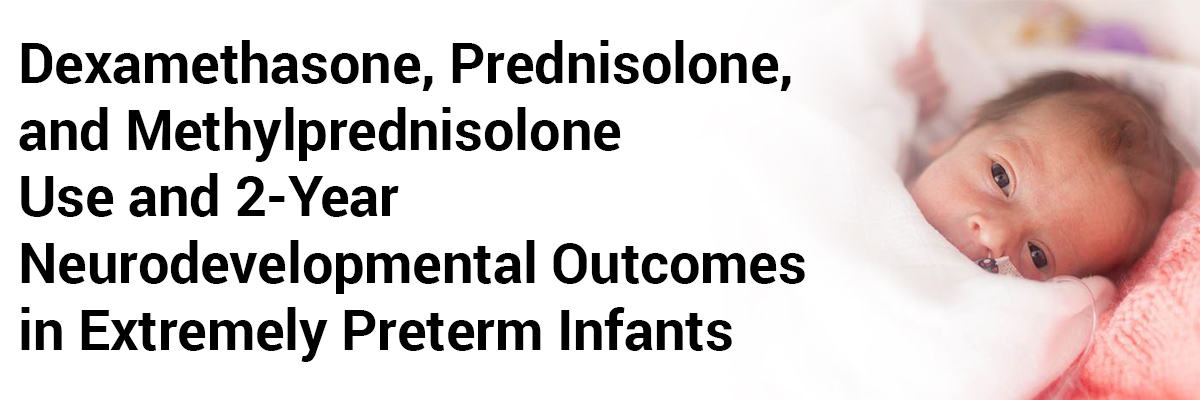
 IJCP Editorial Team
IJCP Editorial Team
Dexamethasone, Prednisolone, and Methylprednisolone Use and 2-Year Neurodevelopmental Outcomes in Extremely Preterm Infants
There exists Practice variability regarding the usage of corticosteroids in treating or preventing bronchopulmonary dysplasia in extremely preterm infants, but limited information exists on longer-term impacts.
A recent study described the use of corticosteroids in extremely preterm infants and evaluated the association with neurodevelopmental outcomes.
This study came as a secondary analysis of data from the Preterm Erythropoietin Neuroprotection (PENUT) randomized clinical trial, conducted in the US. Inborn infants born between 24 0/7 and 27 6/7 weeks gestational age were included in the analysis. The study evaluated the cumulative dose of dexamethasone and duration of therapy for dexamethasone and prednisolone or methylprednisolone.
Demographic and clinical characteristics were described in infants who did or did not receive corticosteroids of interest and survived to discharge. Neurodevelopmental outcomes at 2 years of age were evaluated using the Bayley Scales of Infant Development–Third Edition (BSID-III) at corrected age of 2 years.
The following results were obtained-
- 828 extremely preterm infants with 49% girls; median [IQR] gestational age, 26 [25-27] weeks, who survived to discharge were included in this analysis.
- 312 infants (38%) were exposed to at least 1 corticosteroid of interest during their NICU stay, with 279 exposed to dexamethasone, 137 to prednisolone or methylprednisolone, and 79 to both.
- Exposed infants, had a lower birth weight and were born earlier than non-exposed infants.
- The median (IQR) start day was told to be 29 (20-44) days for dexamethasone and 53 (30-90) for prednisolone or methylprednisolone.
- The median (IQR) total days of exposure was demonstrated to be 10 (5-15) days for dexamethasone and 13 (6-25) days for prednisolone or methylprednisolone.
- The median (IQR) cumulative dose of dexamethasone was reported to be 1.3 (0.9-2.8) mg/kg.
- After adjusting for potential confounders, treatment with dexamethasone for longer than 14 days was found to be associated with worse neurodevelopmental outcomes, with mean scores in BSID-III 7.4 points lower in the motor domain and 5.8 points lower in the language domain, contrasting the unexposed infants.
These findings indicate an association between long-duration & higher cumulative dose of dexamethasone and worse neurodevelopmental scores at corrected age 2 years. Potential unmeasured differences in the clinical conditions of exposed vs unexposed infants may heighten these findings.
SOURCE- Puia-Dumitrescu M, Wood TR, Comstock BA, et al. Dexamethasone, Prednisolone, and Methylprednisolone Use and 2-Year Neurodevelopmental Outcomes in Extremely Preterm Infants. JAMA Netw Open. 2022;5(3):e221947. doi:10.1001/jamanetworkopen.2022.1947

IJCP Editorial Team
Comprising seasoned professionals and experts from the medical field, the IJCP editorial team is dedicated to delivering timely and accurate content and thriving to provide attention-grabbing information for the readers. What sets them apart are their diverse expertise, spanning academia, research, and clinical practice, and their dedication to upholding the highest standards of quality and integrity. With a wealth of experience and a commitment to excellence, the IJCP editorial team strives to provide valuable perspectives, the latest trends, and in-depth analyses across various medical domains, all in a way that keeps you interested and engaged.




















Please login to comment on this article